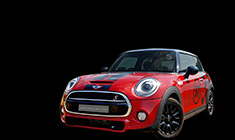News
DIY: Checking clutch wear in Volkswagen DSG (DQ200)
With its help, you can check the clutch condition of a Direct-Shift gearbox as well as how many times it has been engaged in the car’s entire lifetime.
BHPian agambhandari recently shared this with other enthusiasts.
Introduction
As I have been getting deeper into coding cars recently, I have gotten more used to the diagnostics side of the many available programs as well. For VAG cars, the easiest to use option is VCDS (Ross Tech LLC, PA, USA). The main advantage is that it combines most of the important diagnostics and coding options in one app in a more user-friendly fashion.
And as can be seen on the forum, the DQ200 still seems to send shocks through the spines of many uninitiated (as it used to for me as well). But with a good number of enthusiasts considering getting a pre-owned GT TSI DSG and an updated version of the DQ200 now on offer with Taigun/Kushaq, it continues to remain a relevant topic of discussion (more so on this forum as compared to General Market).
The original issue with mechatronics has been more or less sorted in newer cars (2014 onwards) but the clutches do still seem to wear out faster than expected for a Dual Clutch gearbox. Wearing it out isn’t unexpected (it is a wear and tear part after all) but doing so at not very high mileage (at 50-60k km on the odo) is disappointing and is currently the only Achilles heel of this fantastic piece of machinery.
So the premise of this thread is obvious, how to check the state of the DQ200 clutches in any given car. Present and Past. This would be useful for any curious owner or a potential buyer of a used car with this gearbox (GT TSI is an eternal forum favourite). Let’s Dive in!
Measuring Blocks
With the car stationary, the engine running but in P or N. In VCDS, open the Auto Trans Module (02-Auto Trans) and open Measured Value Blocks. These are the various parameters that are available for monitoring for the purpose of Diagnosis by VAG technicians. But the biggest issue is that most are unlabelled and you could spend potentially hours figuring out which ones are important and how to go about interpreting them. This is where the Self Study Program (SSP-94) linked below helped me out. The only thing you need to know is that the two clutches are labelled K1 and K2.

The last 2 points are the most important for us.
“The state of the clutch K1 can be determined by reading the MVB 95-97, whereas the state of the clutch K2 can be determined by reading the MVB 115-17. It is possible to determine the current position of the adjuster for K1 in the MVB 91 and for K2, in the MVB 111."
So for Clutch K1, the following values need to be monitored.

So how does it look like on VCDS? Here is a snapshot of the readings from my 2019 GT TSI, currently done around 18k km.

“95.1 minus 97.1 must be greater than 2 mm
Due to insufficient clutch play, shifting of the input shaft occurs. (This will be entered in the fault memory.)
See example No. 2 and a low difference in the value of the blocks 95.1 minus 97.1.
97.2 minus 96.3 must be greater than 1 mm
At a lower value, the maximum torque is not transmitted and a clutch slippage occurs. The vehicle may start to jolt when driving in higher gears or when accelerating. (This will be entered in the fault memory)"
For Clutch K2, the following values need to be monitored.


115.1 minus 117.1 must be greater than 2 mm
Due to insufficient clutch play, shifting of the input shaft occurs. (This will be entered in the fault memory.)
See example No. 2 and a low difference in the value of the blocks 117.1 minus 115.1.
117.2 minus 116.3 must be greater than 1 mm
At a lower value, the maximum torque is not transmitted and a clutch slippage occurs. The vehicle may start to jolt when driving in higher gears or when accelerating (This will be entered in the fault memory).
As can be seen, the values seem to be well within the normal limit and much higher than the 2 mm and 1 mm as described. From my observation of about 10 DQ200 equipped cars, these calculated values approach 2 mm and 1 mm as the odo of the car increases but remain within normal limits if the clutches are engaging properly and the gearbox is working normally. Thus, a higher value of these readings indicates a potentially longer clutch life remaining from the time of measurement. But definitely, a car driven on the highway for 50k km would have lesser wear on the clutch as compared to a car that has done the same mileage in the city with peak traffic, so don’t judge the car purely based on the odo.
Also, MVB 235-244 and 245-254 can be checked to see any previously recorded fault.
Bonus MVB
Just an interesting tidbit visible in the system is the number of times the clutches have been engaged in the lifetime of the car. Maybe so that you can be happy about the fact that you have an AT and your left leg can thank you for sparing it.


Closing Thoughts

DQ200 clearly isn’t for everyone. I still maintain that I probably would have bought an MT TSI Polo (if it was available at the time I bought it) purely to avoid it. But living with it for nearly 3 years now I would not have it any other way. The shifts are faaast when you need them to be and imperceptible when you want them to be. It is a better gearbox than most of us would be at working a Manual. And this gearbox is a big part of the exciting puzzle that is the GT TSI. It rows through gears like nobody’s business and that’s what makes the car feel fast (er than it probably is). This is something that has gone missing in the newer Polo TSI AT with the torque converter Aisin Gearbox. I also test drove the Kushaq 1.5 DSG and while I was quick to complain that the engine in it is just too linear compared to the 1.2 TSi, I’m glad to share that the DSG was still as snappy as it is in the Polo.
A well maintained GT TSI is a great entry point for most enthusiasts and I have shared this info on the forum so as to shed some light on the unknown. And to dispel the fears that many have about buying a car with one. With the mechatronic unit now being more reliable, the days of randomly being stranded are definitely behind us and the clutch pack is the only real thing to keep a note of. And even when it does eventually pack up (sorry for the Pun), replacement parts are readily available and can be done by an experienced installer as documented by a good friend and fellow Bhpian Viraat13 here (DSG FIX - Multiclutch replacement of the DQ200 on my VW Polo GT TSI).
P.S. - And do install those paddle shifters that you are thinking about! It's probably the most Fun Mod that can be added to this car. I can’t imagine driving my car without it now.

Check out BHPian comments for more insights and information.
- Tags:
- Indian
- Member Content
- undefined



















